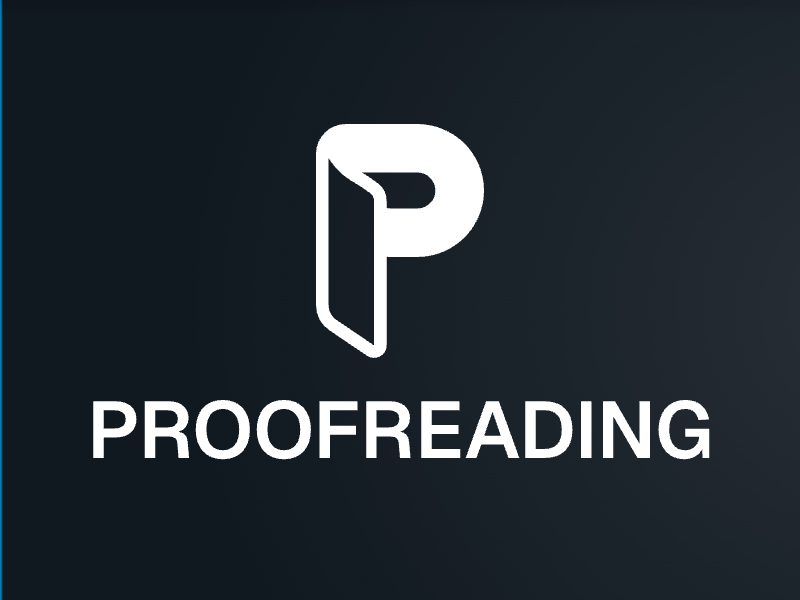Microsoft Word vs Proofreading AI Always Choose the Best

Elevating Writing Quality: Microsoft Word vs Proofreading AI
Discover how Microsoft Word and Proofreading AI differ in enhancing your writing.
Features | Microsoft word | Proofreading AI |
|---|---|---|
Accuracy in Proofreading | Basic error detection | Advanced algorithms for comprehensive analysis |
Identifying Typos and Style | Grammar and spell checking | Contextual analysis and AI humanizer |
Ease of Use | User-friendly interface | Intuitive drag-and-drop functionality |
Cost Comparison | Subscription-based model | Free trials and budget-friendly options |
Integration with Other Tools | Microsoft 365 compatibility | Support for various file formats |
Accuracy Comparison | Misses nuanced errors | Achieves up to 12.8% higher accuracy |
Features for Enhancing Style | Basic suggestions for clarity | Refines tone and provides plagiarism detection |
Use Case Scenarios | Basic proofreading and formatting | Advanced writing needs and academic essays |
Combining Both Tools | Drafting and formatting | Advanced proofreading and style refinement |
Your choice between Microsoft Word and Proofreading AI can significantly impact how effectively you communicate through writing. Microsoft Word offers basic proofreading tools, helping you catch spelling and grammar mistakes. However, Proofreading AI takes it further by using advanced technology to refine your sentences and ensure you are writing clearly. Studies show that AI proofreading tools outperform Microsoft Word in error detection, with some achieving up to 12.8% higher accuracy. If you aim to elevate your writing, understanding these differences will help you make the right decision.
Key Takeaways
Microsoft Word is ideal for basic proofreading and document formatting, making it suitable for everyday tasks like drafting emails and reports.
Proofreading AI offers advanced proofreading capabilities, including contextual analysis and plagiarism detection, making it essential for academic writing.
Combining Microsoft Word for drafting and Proofreading AI for editing can enhance the quality of your documents, ensuring both polished formatting and error-free content.
Proofreading AI outperforms Microsoft Word in accuracy, catching nuanced errors and providing tailored suggestions for clarity and tone.
For students and professionals on a budget, many AI proofreading tools offer free trials or versions, making them a cost-effective choice compared to subscription-based services.
While Proofreading AI enhances writing quality, it should complement, not replace, human proofreading for critical projects requiring nuanced understanding.
Microsoft Word: Built-in Proofreading Features and Limitations

How Microsoft Word Helps You Proofread

Microsoft Word provides essential tools to help you proofread your documents effectively. Its built-in spelling and grammar checker identifies common errors, ensuring your text is free from basic mistakes. By underlining issues in real-time, it allows you to address them immediately. This feature is particularly useful when you need to produce polished content quickly.
Additionally, Microsoft Word integrates with Microsoft 365, enabling seamless access to advanced proofreading features like Microsoft Editor. This AI-powered tool enhances your writing by offering suggestions for clarity, conciseness, and tone. It also supports multiple languages, making it a versatile choice for global users. Whether you're drafting an email or preparing a report, Microsoft Word simplifies the proofreading process.
Strengths of Microsoft Word for Editing
Limitations of Microsoft Word in Identifying Typos and Style Issues
While Microsoft Word offers robust proofreading tools, it has limitations. Its spelling and grammar checker often misses nuanced errors, such as incorrect word usage or subtle style inconsistencies. For instance, it may not flag homophones like "their" and "there," which can lead to overlooked mistakes in your writing.
The platform also struggles with advanced style suggestions. Unlike dedicated AI proofreading tools, Microsoft Word doesn't provide in-depth feedback on tone, sentence structure, or readability. This limitation can be a drawback for academic or professional writing, where precision and style are crucial. Furthermore, its proofreading capabilities lack the adaptability to cater to specific writing needs, such as academic essays or creative content.
Proofreading AI: Advanced Proofread and Edit Capabilities

How Proofreading AI Works to Identify Typos and Enhance Writing
Proofreading AI revolutionizes the way you proofread and edit your essays. Unlike traditional tools, it uses advanced algorithms to analyze your text at a deeper level. It doesn’t just check for grammar and spelling; it evaluates sentence structure, tone, and clarity. This ensures your writing is not only error-free but also polished to a professional standard.
When you upload your essay, the AI proofreader scans the content to identify typos, grammatical errors, and punctuation issues. It provides real-time suggestions, allowing you to make immediate corrections. These tools excel in catching subtle mistakes, such as misplaced modifiers or incorrect verb tense, which are often overlooked by basic proofreading tools. By addressing these issues, Proofreading AI helps you create essays that are clear, concise, and impactful.
Moreover, AI proofreading tools adapt to your writing style. They offer tailored suggestions based on the context of your essay, ensuring the edits align with your intended message. This makes them particularly valuable for students aiming to improve their academic writing skills. With Proofreading AI, you can focus on your ideas while the tool handles the technical details.
Unique Features of Proofreading AI for Academic Writing
Proofreading AI stands out for its specialized features designed for academic settings. These tools go beyond basic proofreading capabilities to provide a comprehensive suite of writing assistance. Here’s what makes them unique:
Contextual Analysis: Proofreading AI evaluates your essay as a whole, ensuring coherence and logical flow. It identifies areas where your arguments may lack clarity and suggests improvements.
Plagiarism Detection: Many AI proofreading tools include plagiarism checkers, helping you ensure originality in your essays. This is crucial for maintaining academic integrity.
Citation Assistance: Some tools offer features like citation generation, making it easier to format references correctly. This saves time and ensures compliance with academic standards.
AI Humanizer: This feature refines your writing style, making it sound more natural and engaging. It’s especially helpful for non-native English speakers who want their essays to have a professional polish.
These features make Proofreading AI an indispensable tool for students. Whether you’re working on a research paper or a personal essay, it provides the support you need to excel in your academic writing.
Potential Drawbacks of Proofreading AI

While Proofreading AI offers numerous benefits, it’s essential to understand its limitations. These tools, though advanced, may not fully grasp the nuances of complex academic concepts. For instance, they might misinterpret discipline-specific terminology or fail to recognize the intended tone of your essay.
Additionally, relying solely on AI proofreading tools can lead to overconfidence in their accuracy. While they excel in identifying typos and grammatical errors, they cannot replace the critical thinking and contextual understanding of a human proofreader. For essays requiring a high level of precision, combining AI tools with manual proofreading ensures the best results.
Another consideration is the potential for over-editing. Some suggestions from AI tools may alter the original meaning of your sentences. It’s crucial to review each recommendation carefully to maintain the integrity of your essay. Despite these drawbacks, Proofreading AI remains a powerful ally in improving your writing quality.
Key Comparison Factors: Microsoft Word vs Proofreading AI
Accuracy in Proofreading and Editing
When it comes to accuracy, Proofreading AI outshines Microsoft Word. While Microsoft Word's grammar and spell checker catches basic errors, it often misses nuanced mistakes like incorrect word usage or subtle grammatical inconsistencies. For example, it may fail to differentiate between homophones such as "affect" and "effect." On the other hand, Proofreading AI employs advanced algorithms to analyze your text comprehensively. It identifies not only typos but also issues with sentence structure, tone, and clarity.
Studies reveal that AI proofreading tools, like Wordvice AI, achieve up to 12.8% higher accuracy in error detection compared to Microsoft Word. This makes Proofreading AI a superior choice for academic writing, where precision is critical. Whether you're drafting a research paper or an essay, you can rely on Proofreading AI to deliver polished and professional results.
"Using an AI tool for proofreading offers improved accuracy and efficiency in error detection, time-saving, and faster proofreading process."
Features for Identifying Typos and Enhancing Style
Microsoft Word provides essential proofreading features, including grammar and spell checking, along with suggestions for clarity and conciseness. Its integration with Microsoft Editor adds advanced options like vocabulary enhancement and tone adjustments. However, these features remain limited when compared to the capabilities of Proofreading AI.
Proofreading AI goes beyond basic proofreading. It evaluates your text for coherence, readability, and logical flow. Unique features like contextual analysis ensure that your arguments are clear and well-structured. Additionally, tools such as plagiarism detection and citation assistance make it invaluable for academic writing. Proofreading AI also includes an AI humanizer, which refines your writing style to sound more natural and engaging. These advanced features cater specifically to students and professionals aiming to elevate their writing quality.
Here’s a quick comparison of their standout features:
Microsoft Word:
Grammar and spell checking
Suggestions for clarity and conciseness
Basic tone adjustments
Proofreading AI:
Contextual analysis for logical flow
Plagiarism detection and citation assistance
AI humanizer for natural writing style
For enhancing style and ensuring error-free content, Proofreading AI proves to be the more comprehensive tool.
Ease of Use for Beginners and Advanced Users
Microsoft Word is known for its user-friendly interface. Its proofreading tools are straightforward, making it accessible for beginners. You can easily navigate its features, whether you're editing a short email or formatting a lengthy document. The integration with Microsoft 365 ensures seamless access across devices, which is particularly useful for professionals managing multiple projects.
Proofreading AI, however, takes ease of use to another level. Its intuitive drag-and-drop interface allows you to upload documents effortlessly. Once uploaded, the tool provides real-time suggestions, enabling you to make corrections instantly. This simplicity appeals to both beginners and advanced users. Moreover, its ability to adapt to your writing style ensures personalized feedback, making it a valuable resource for students and professionals alike.
If you're looking for a tool that's easy to use yet powerful in its capabilities, Proofreading AI offers the perfect balance. Its advanced features, combined with a simple interface, make it a standout choice for anyone aiming to improve their writing.
Cost Comparison: Microsoft Word vs Proofreading AI
When evaluating the cost of Microsoft Word and Proofreading AI, you must consider both upfront expenses and long-term value. Microsoft Word typically requires a subscription to Microsoft 365, which starts at $6.99 per month for personal use. This subscription includes access to Microsoft Editor, its AI-powered proofreading tool. While this cost covers a suite of applications, it may not be ideal if you only need advanced proofreading features.
Proofreading AI, on the other hand, offers a more budget-friendly option. Many AI proofreading tools, including Proofreading AI, provide free trials or even free versions with no limits. These allow you to experience their full capabilities without committing to a subscription. For students and professionals on a tight budget, this can be a significant advantage. Additionally, Proofreading AI focuses solely on enhancing your writing, ensuring you get maximum value for your investment.
In terms of long-term benefits, Proofreading AI often proves more cost-effective. Its advanced features, such as contextual analysis and citation assistance, eliminate the need for additional tools or services. By addressing multiple writing needs in one platform, it saves both time and money. Microsoft Word, while versatile, may require supplementary tools for tasks like plagiarism detection or style refinement, increasing overall costs.
"Choosing the right tool depends on your priorities. If you need a comprehensive suite of applications, Microsoft Word offers good value. However, for dedicated proofreading and editing, Proofreading AI provides unmatched affordability and efficiency."
Integration with Other Tools and Platforms
Integration plays a crucial role in determining how seamlessly a tool fits into your workflow. Microsoft Word excels in this area, thanks to its compatibility with Microsoft 365. You can access your documents across devices, collaborate in real-time, and integrate with other Microsoft applications like Excel and PowerPoint. This makes it a convenient choice for professionals managing diverse projects.
Proofreading AI also offers impressive integration capabilities. Many AI proofreading tools, including Proofreading AI, support various file formats, allowing you to upload documents directly from platforms like Google Drive or Dropbox. This flexibility ensures that you can proofread and edit your work without disrupting your existing workflow. Additionally, Proofreading AI's ability to adapt to different writing styles makes it a versatile companion for academic, professional, and creative projects.
For students, Proofreading AI stands out due to its specialized features tailored for academic writing. Its integration with plagiarism detection tools and citation generators streamlines the essay-writing process. By combining these features with its proofreading capabilities, it eliminates the need for multiple tools, enhancing productivity.
Both tools offer valuable integration options, but their focus differs. Microsoft Word prioritizes collaboration and accessibility within its ecosystem. Proofreading AI emphasizes enhancing your writing quality while supporting external platforms. Your choice should align with your specific needs and how you plan to use the tool.
Use Case Scenarios: When to Use Microsoft Word or Proofreading AI
Microsoft Word for Basic Proofreading and Document Formatting
Microsoft Word serves as a dependable tool when you need basic proofreading and document formatting. Its built-in spelling and grammar checker ensures that your text remains free from common errors. You can rely on it to catch typos and simple grammatical mistakes, making it ideal for everyday tasks like drafting emails, creating resumes, or preparing business reports.
The software also excels in document formatting. You can easily adjust margins, add headers, and create professional layouts. This makes Microsoft Word a go-to choice for users who prioritize polished presentation alongside basic proofreading. Its integration with Microsoft 365 further enhances its utility, allowing you to access and edit documents across multiple devices seamlessly.
However, if your writing requires advanced style refinement or in-depth analysis, Microsoft Word may not fully meet your needs. It lacks the ability to provide detailed feedback on tone, sentence structure, or logical flow. For these scenarios, you might need a more specialized tool.
"Microsoft Word is perfect for users who need a straightforward solution for basic proofreading and professional document formatting."
Proofreading AI for Academic Essays and Advanced Writing Needs
Proofreading AI shines when you need to elevate your writing to a professional or academic standard. Unlike Microsoft Word, it goes beyond basic error detection. It evaluates your text for coherence, readability, and tone, ensuring that your message is clear and impactful. This makes it particularly valuable for students working on essays, research papers, or dissertations.
One of the standout features of Proofreading AI is its ability to adapt to your writing style. It offers tailored suggestions that align with the context of your content. For academic writing, it provides tools like plagiarism detection and citation assistance, which are essential for maintaining integrity and adhering to academic standards. These features save time and reduce the stress of manual checks.
Studies have shown that AI proofreading tools outperform Microsoft Word in accuracy. For instance, the Wordvice AI Proofreader demonstrated an 11.4% higher performance on average across various subject areas, including medicine and computer science. This level of precision ensures that your work meets the highest standards, making Proofreading AI an indispensable tool for advanced writing needs.
"For academic essays and professional documents, Proofreading AI offers unmatched accuracy and specialized features that Microsoft Word cannot provide."
Combining Microsoft Word and Proofreading AI for Best Results
You don’t have to choose between Microsoft Word and Proofreading AI. Combining both tools can provide a comprehensive solution for your writing needs. Start by using Microsoft Word for drafting and formatting your document. Its user-friendly interface and robust formatting options make it easy to create a polished layout.
Once your draft is ready, upload it to Proofreading AI for advanced proofreading. The AI tool will analyze your text for nuanced errors, refine your style, and ensure clarity. This two-step process allows you to leverage the strengths of both tools, resulting in a document that is both visually appealing and error-free.
For example, you can use Microsoft Word to format a research paper with proper headings and citations. Then, use Proofreading AI to check for plagiarism, enhance readability, and refine your tone. This combination ensures that your work not only looks professional but also meets the highest standards of quality.
"By combining Microsoft Word and Proofreading AI, you can achieve the perfect balance of polished formatting and advanced proofreading."
For students and professionals aiming to excel in their writing, this approach offers the best of both worlds. Whether you're preparing an academic essay or a business proposal, using these tools together ensures exceptional results.
Microsoft Word provides a dependable solution for basic proofreading and document formatting. Its tools help you catch common errors and create polished layouts, making it ideal for everyday tasks. However, if you aim to refine your writing further, Proofreading AI offers advanced grammar, style, and tone analysis. It ensures clarity and precision, especially for academic essays or professional documents.
Tip: For the best results, combine both tools. Use Microsoft Word for drafting and formatting, then rely on Proofreading AI to elevate your content to a professional standard. This approach guarantees polished and impactful writing every time.
FAQ
What is the main difference between Microsoft Word and Proofreading AI?
Microsoft Word focuses on basic proofreading and document formatting. It helps you catch common spelling and grammar mistakes while offering tools for professional layouts. Proofreading AI, however, provides advanced proofreading capabilities. It analyzes your text for tone, clarity, and sentence structure, making it ideal for academic essays and professional documents. If you need detailed feedback and enhanced writing quality, Proofreading AI is the better choice.
Can I use both Microsoft Word and Proofreading AI together?
Yes, combining both tools can maximize your writing efficiency. Use Microsoft Word for drafting and formatting your document. Then, upload it to Proofreading AI for advanced proofreading and style refinement. This approach ensures your content is polished, error-free, and professionally formatted. By leveraging the strengths of both tools, you can achieve exceptional results.
Tip: Start with Microsoft Word for layout and structure, then rely on Proofreading AI for nuanced editing.
Is Proofreading AI suitable for academic writing?
Absolutely. Proofreading AI is designed to meet the needs of students and academics. It offers features like plagiarism detection, citation assistance, and contextual analysis. These tools ensure your essays are original, well-structured, and adhere to academic standards. For students aiming to improve their writing, Proofreading AI provides invaluable support.
How accurate is Proofreading AI compared to Microsoft Word?
Proofreading AI outperforms Microsoft Word in accuracy. While Microsoft Word catches basic errors, it often misses nuanced mistakes like incorrect word usage or subtle grammatical inconsistencies. Proofreading AI uses advanced algorithms to identify typos, refine tone, and enhance clarity. Studies show that AI proofreading tools achieve up to 12.8% higher accuracy than Microsoft Word.
Does Proofreading AI work for non-native English speakers?
Yes, Proofreading AI is an excellent tool for non-native English speakers. It adapts to your writing style and provides suggestions to make your text sound natural and engaging. Features like the AI humanizer refine your tone, ensuring your writing feels professional and fluent. This makes it a valuable resource for improving communication skills.
Is Proofreading AI free to use?
Many AI proofreading tools, including Proofreading AI, offer free trials or versions with no limits. These allow you to experience their full capabilities without any upfront cost. For students and professionals on a budget, this makes Proofreading AI an affordable option compared to subscription-based tools like Microsoft Word.
Can Proofreading AI replace human proofreading?
Proofreading AI enhances your writing but cannot fully replace human proofreading. While it excels in identifying errors and refining style, it may not grasp complex academic concepts or nuanced tones. For critical projects, combining AI tools with manual proofreading ensures the best results.
How does Proofreading AI handle plagiarism detection?
Proofreading AI includes a built-in plagiarism checker. It scans your text against a vast database to ensure originality. This feature is particularly useful for academic writing, where maintaining integrity is crucial. By using Proofreading AI, you can avoid unintentional plagiarism and save time on manual checks.
Which tool is better for formatting documents?
Microsoft Word is the better choice for document formatting. It offers robust tools for adjusting margins, adding headers, and creating professional layouts. Proofreading AI focuses on enhancing writing quality rather than formatting. For a polished presentation, rely on Microsoft Word’s formatting capabilities.
What should I consider when choosing between Microsoft Word and Proofreading AI?
When deciding, consider your specific needs. If you require basic proofreading and document formatting, Microsoft Word is sufficient. For advanced editing, academic writing, or style refinement, Proofreading AI is the superior option. Evaluate factors like accuracy, ease of use, cost, and integration to select the tool that aligns with your goals.
Recommendation: Use Microsoft Word for general tasks and Proofreading AI for specialized writing needs.
